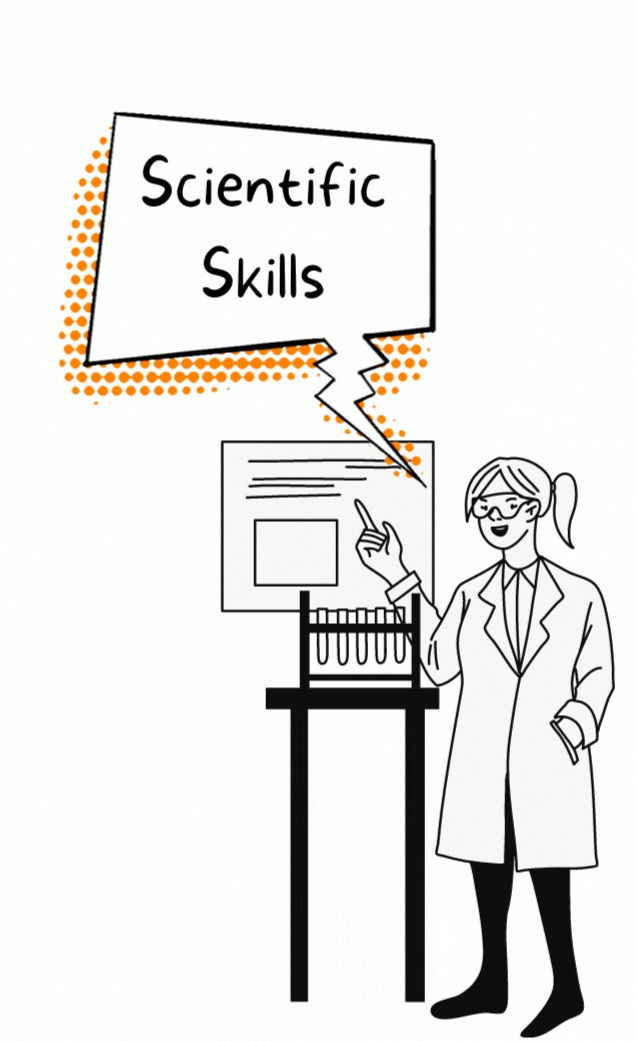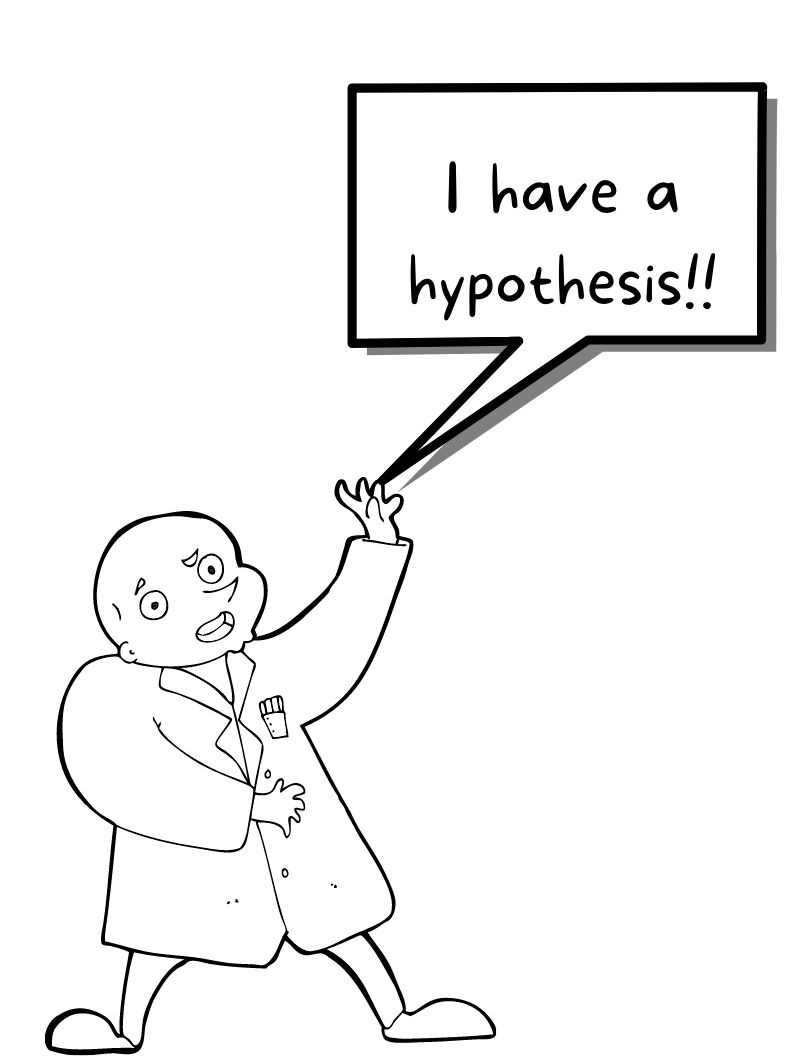4 Mistakes we make when Teaching the Scientific Method
- Androy

- Nov 16, 2021
- 7 min read
Updated: Jul 25, 2022

1. We teach "The Scientific Method " as if there is only one!
There is no single scientific method that all scientists follow!
When we teach the scientific method, we inadvertently tell our students that there is a single, standard method that all scientists use, and that is just not the case.
The scientific method presented in science classrooms and textbooks is a gross oversimplification of how scientists generally build knowledge and is useful for getting students to start thinking about how science works and to understand that science is a systematic process. However, for the most part, the scientific method represents how scientists write up the results of their studies but is not an accurate representation of the sequence of steps in which their investigations are performed.
Scientific inquiry is not a matter of following a set of pre-determined rules. It is fluid, reflexive, and unpredictable.
There is no one method that works in all circumstances and the volcanist may work differently from the bacteriologist and the archaeologist may work differently from the chemist.
How Do we address this?
1. Design Classroom investigations that require different approaches or a different sequence of steps
Have your students carry out some research on the different branches of science and how scientists conduct research within the different fields. Have them focus on the differences in how these scientists test their ideas.
Students can be probed with questions such as:
" What are the differences between how a paleontologist and a physicist test their ideas?"
"How does an archeologist collect data that is different from how a biologist would?"
Students will soon come to learn that there are as many different methods of acquiring scientific knowledge and testing scientific ideas as there are scientists performing them.
To demonstrate this have students plan and design their own investigations, you can start some students off with a hypothesis, some with an observation, and some with a question that they should aim to find an answer to. When students are done you can have them compare the sequence of steps they took in order to arrive at a conclusion.
2. Focus on the skills used by scientists rather than the steps used by scientists

One of the most important aspects of science education is helping our students master science process skills. These skills include communicating (written and verbal), observing, analyzing, inferring, and manipulating scientific equipment.
With just a few tweaks to our language, we can shift the focus from steps of the scientific method to skills used by scientists and as such, concentrate our lessons on helping students develop and master these skills rather than having them follow some formula.
Students will begin to see science more as an intellectual and practical endeavor that employs many different skills and approaches to investigate the natural world.
3. Have students evaluate the scientific process of real scientists.
Many scientists made famous for their groundbreaking discoveries did not follow the cut-and-dry scientific method that we teach in our classrooms. Some of these scientists made many changes to their methods, sometimes going back and forth between collecting data, reformulating their hypotheses, or scrapping the entire thing and starting from scratch.
These scientists often used the results and knowledge from previous studies even those that were considered "accidental discoveries" to guide their investigations and the formulation of hypotheses.
It can be useful to have students evaluate the method and "thinking" of different scientists in different fields in order to get a glimpse of how these scientists approached their work. This resource could be useful to start the discussion.
2. We mix up technical scientific language with colloquial language and definitions
Example 1: A hypothesis is not just an educated guess!
If you have ever defined a hypothesis as an educated guess then you are not alone! For many years I defined it as such to my younger students when first introducing the topic. This definition can even be found in some textbooks.
However, in recent years, I have tried to avoid this definition as much as possible (although it is arguably more accessible to younger science students than the definition I am about to present).
My issue with this definition is that students tend to ignore the educated part and focus on the "guess" part of this definition. Also, an educated guess d does not fully encompass the definition of a hypothesis.

Emphasis on testable! That is, when written, a hypothesis should contain within its premise an independent and dependent variable and should have some predictive power.
Why is this important?
This is important because it has an effect on how well students can write proper hypotheses later on in their science careers. An issue I have observed with my older upper secondary students ( ages 14-16) is that their hypotheses are untestable and have been reduced to mere predictions.
Here is an example of this:
A student is asked to plan and design an investigation to determine the effect of temperature on mold growth on white bread.

The above hypothesis represents an educated guess, it does have predictive power however, it is not testable and therefore is not a good hypothesis.

This hypothesis is testable. Not only does it have predictive power the dependent and the independent variables are both clearly stated.
A useful method for teaching older students how to write sound and testable hypotheses is by using the PICOT method.
P - Population
I- Interest/ Intervention
C-Comparison
O-Outcome
T-Time
I personally prefer teaching students to write hypotheses this way rather than the conventional if/then statements as it is the preferred format at higher levels of science education.
I will be writing a post on teaching students how to write hypotheses using the PICOT method soon.
Example 2: A Theory is not a hunch!
In everyday language, the word theory is often used synonymously with a hunch or a guess, and sometimes we allow this everyday language to slip into our science classrooms without even noticing. Have you ever made statements or heard others use statements such as:
" I have a theory..."
"Does anyone have a theory for..."
"______ is just a theory..."
You may be thinking: it's fine to use statements like these in non-scientific settings, the word theory clearly has a different meaning when used outside of the scientific community. But I will have to disagree. The term theory is a technical-scientific term and its use in this colloquial fashion has led to widespread misuse among the public and among our young and budding scientists.

Scientific theories often integrate and generalize many hypotheses, and each hypothesis can be tested independently. For a scientific theory to be accepted by the scientific community it must be strongly supported by many lines of evidence.
How often have we heard individuals make statements such as :

"Evolution is just a theory"
or
" Climate change is just a theory"
conflating the colloquial and technical definitions of the term as if there are no substantial and verified data supporting these phenomena (whether we agree or disagree with the interpretation of the evidence is a different conversation altogether, but the existence of the data cannot be denied).
This misuse can be rectified within our classrooms by clearly defining these terms and by having students use them appropriately.
3. We do not clearly differentiate among Hypotheses, scientific theories, and scientific laws
During my research for this post, I browsed through some science discussion boards and conducted interviews with science students between the ages of 14-16. I found that a number of students believe that hypotheses can be upgraded to theories and scientific theories can eventually become scientific laws if sufficient evidence is gathered to support them.
What is more, some of these students confessed that they obtained these erroneous ideas from their teachers!
As mentioned, some of the misconceptions that are birthed in our science classrooms stem from the language used, and our colloquial use of technical-scientific terms. As educators, we may take it for granted that our students do not know or understand the differences between the colloquial and technical use of these terms leading to confusion. Additionally, we may have our own misconceptions about certain scientific concepts that we inadvertently pass on to our students.

A hypothesis does not upgrade to a scientific theory, rather, a scientific theory can encapsulate many related hypotheses. Additionally, although laws and theories do share some connections one does not become the other.
Laws are generalizations while theories explain these generalizations. Scientific laws are descriptions often mathematical of natural phenomena. Scientific laws are based on empirical observations that have never had repeatable contradictions and are universally accepted within the scientific community.
For example, the Law of Gravity discovered by Isaac Newton mathematically describes how two different bodies in the universe interact with each other. It does not however explain what gravity is, or how it works. Albert Einstein’s theory of relativity which came centuries later provided a probable explanation for how gravity works.
Ensure that your students know the differences among these terms and definitions using real examples of hypotheses and the theories and laws that encapsulate them.
4. We place too Much Emphasis on Experiments
Did you know that experimentation is not the only way of testing a scientific idea? In some cases, such as those involving human subjects, experimentation, may even be considered unethical (I am sure you can imagine why).
Students really enjoy doing experiments though, especially when they are young and curious. The issue arises when students enter the higher grade levels with the false impression that experiments are the only means of testing hypotheses due to our emphasis on them during the introductory courses.
This is one of the many reasons why some do not regard social science as real science compared to the hard sciences due to their minimal use of experimentation as a means of gathering data and testing ideas.
Students should be taught that scientists use a number of different strategies for testing hypotheses such as basic observations and historical exploration.
As previously mentioned, it is useful to switch up our lessons once in a while and have students dabble in other methods of investigation.
Address Students misconceptions with concept Cartoons
Many misconceptions can arise when introducing science and the process of science to our students. It is important to identify and address these misconceptions early on before they can fester and grow thereby causing our students tremendous difficulty later down the line. A strategy I employ with my younger students is the use of concept cartoons to generate discourse in my classes.
At the beginning of each class, a group of students are given a task card or the image ( as shown below) is projected on the whiteboard where a number of cartoon characters discuss their ideas surrounding a particular topic.
Students will then choose the character that they most identify with and justify their decision to members of their group or to the class.
This helps me understand some of the misconceptions students have with respect to the scientific method and gives me the opportunity to address them before moving on to another topic. You can download the misconceptions in science concept cartoons from my TpT store, as well as other material to support your teaching of the scientific method.
Do you agree or disagree with some of these mistakes? Drop us a line in the comments!
Also if you detect any errors in any of our posts send an email to mindmatterstutoring@gmail.com and we will be sure to correct them!





















Comments